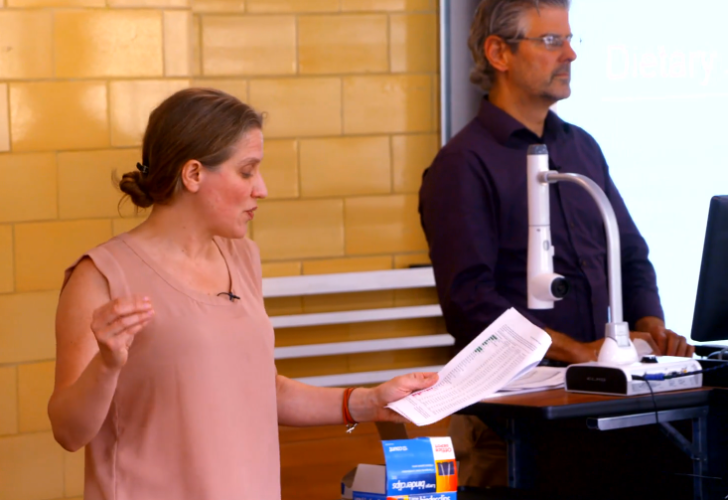An Ancient Plant with a Modern Treatment Opportunity

Published
Your support to Bastyr helps students like Denne become leaders in natural medicine. Make a difference with your gift today.
An Ancient Plant with a Modern Treatment Opportunity
Parkinson’s Disease (PD) effects one million people in the United States, and ten million people worldwide. Currently, the most common pharmaceutical that helps patients with PD is Levodopa/Carbidopa. Not all have access to this treatment, however. What if there are other treatments that could help improve quality of life?
Together with a team of other researchers, ND student Tanya Denne is studying a fascinating plant that might hold answers.
An Ethnobotanical Journey
Researchers at Bastyr University and Oregon Health & Science University (OHSU) have joined forces to study a legume that shows promising results as a natural treatment option for PD, though further tests are needed. Mucuna pruriens is native to subtropical and tropical regions of India, Asia and Africa. In 2016, Tanya traveled to India for three months to learn more about this plant and see it growing in its native environment. She spent time with local tribes and pharmaceutical schools in the area, learning from them and collaborating on research efforts. Watch the short video of her travels to India here.
In addition to spending time in India, Denne has also collected and documented seeds in Costa Rica and Thailand. Today, seeds grow in Hawaii for research purposes.
Mucuna’s Medicinal Properties - How Does it Help with PD?
Decreased dopamine levels in the striatum area of the brain are thought to contribute to the symptoms of PD. The pharmaceutical Levodopa/Carbidopa contains an amino acid called L-dihydroxyphenylalanine (L-Dopa), which is responsible for elevating dopamine levels and thereby reducing symptoms such as tremors many PD patients suffer from. Mucuna seeds have the highest level of L-Dopa naturally, of any documented plant in the world.
Research So Far
The team created a Mucuna seed extract, noted the levels of L-Dopa, and re-suspended the seed extract in a saline solution. From there, the team studied a murine (mice) model with a neurotoxin to mimic the tremors often seen in patients with Parkinson’s. Some mice received a dose of the Mucuna seed extract, while others received saline only. All mice were monitored over a 4- and 8-week span.
Tanya and those on her team noticed that the mice in the study experienced a loss in tyrosine hydroxylase (TH) in the striatum, due to the neurotoxin. After completing the 8-week observation, the study showed that mice gavaged (fed through a tube) with the Mucuna seed extract showed increased TH protein levels compared to the saline control group. This increase in TH suggests a neurorestorative property of the Mucuna extract.
Based on the results from this study, further studies are required with a larger sample size.
In Her Own Words:
“The success of this project is based on the collaborative efforts between OHSU and Bastyr University. Building a successful research team and having available the plethora of knowledge has propelled and supported this project. It has been key and instrumental to its success. Through collaborative efforts, we can facilitate the speed at which we conduct scientific research, each harnessing our own skill sets and working with one goal with patient outcomes in mind.
We are now working with the Parkinson’s Institute in Italy and writing lay manuscripts for growing Mucuna in Africa to aid in public health efforts and provide access to a sustainable plant source of L-Dopa. It is estimated that only 9% of the population in Africa had access to Levodopa/Carbidopa medication (Reference: Movement Disorder Society, MDS conference, 2019 France). From a public health perspective, Mucuna has great potential to be an affordable and assessable treatment option.
We still have a long way to go and much to learn about this intriguing plant and its potential use in PD. The preliminary data is very encouraging and its historical and traditional use holds value. We need to preserve the traditional Ayurvedic knowledge and study it with a scientific lens for botanical treatment options.
As a naturopathic medical student, I’m excited about the potential of a botanical that has possible neurorestorative (and known neuroprotective effects) and how we can use that potential to help patients. It does not replace PD therapy but adds another therapeutic option. Many patients are nervous or refuse to use conventional medications for their PD, and therefore go symptomatically untreated. Mucuna offers an option here, and that’s empowering for patients.”
For more information on the research currently conducted at Bastyr University Research Institute, visit the BURI webpage.

